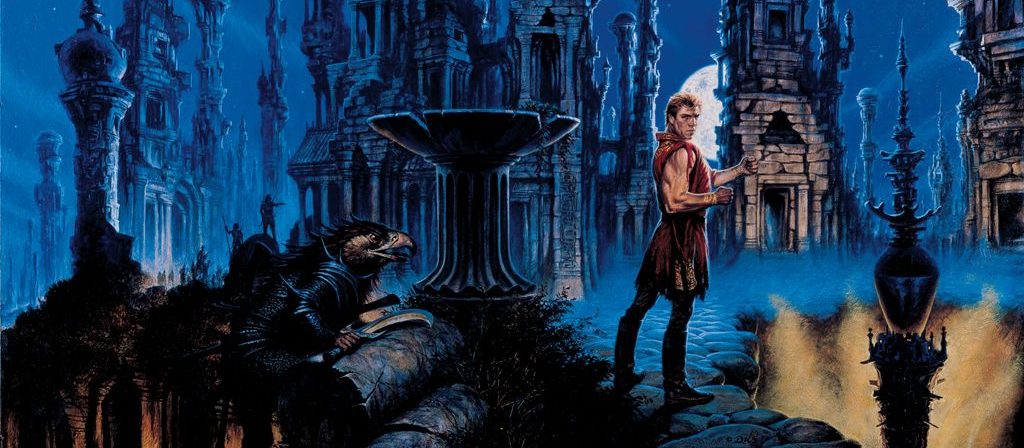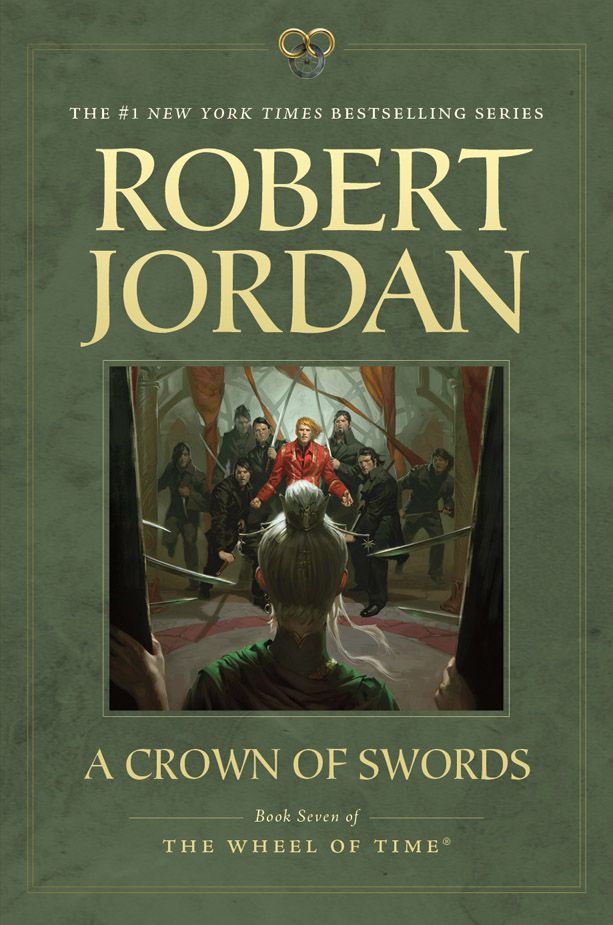

“In a cruel land, you either learned to laugh at cruelty or spent your life weeping.”
The seventh Wheel of Time book exhibits the lengthy-and-growing laundry list of annoying tendencies that have plagued the series up to this point. Flat characters, scene-setting given more attention than narrative, suspect pacing, annoying female banter, ridiculous gender dynamics, endless descriptions of clothes and breasts, unnecessarily extensive backgrounds for extraneous characters who don’t even deserve to be named… I’ve steeled myself and come to terms with these flaws. It is not the case that Robert Jordan tried and failed to improve or took risks that didn’t pay off. His series was immediately popular and sold tens of millions of copies. What did he need to improve upon? If the ultimate aim was popularity within the fantasy genre and legions of fans, then he had achieved it. All that’s left after that is to keep the machine running and that’s what I expect he did. If someone produced a contract that showed he was paid by the word I would believe it to be genuine. Anyway, I’ve accepted this—through whatever subconscious process—and tempered my expectations. With this new perspective, now no longer envisioning the epic fantasy tale that I had originally pictured in my mind but rather a pulpy cartoon world of unbounded magic and children of fate and kings and queens and all manner of exotic humanoid creatures, I found that I could more easily stomach the bloated style and maybe even slightly appreciate the few things that the author does well. Those few things are still mostly lost amidst the dross, but since I came expecting as much, I had a slightly more pleasant experience than usual with A Crown of Swords. It’s still dreadful, but I knew it would be dreadful.
Her notion of what to wear visiting the roughest part of the city without attracting attention was a wide green hat with green-dyed plumes, a light dustcloak of green linen worked in golden scrolls hanging down her back, and a high-necked green silk riding dress with gold embroidery climbing the divided skirts and thickly emphasizing the oval that exposed half her bosom.
So let’s look past the haughty titillation, the smouldering gazes and embarrassed blushes, the thoughts of spanking, the fuss over boobs, the catfighting, the colors of thread, the indestructible main characters, the random internal monologues of side characters who you’ll forget the name of when you turn the page—all of which Jordan refuses to make interesting by simply repeating the same lame turns of phrase time and again. (He even repeatedly describes the same exact objects in elaborate detail.) If we pretend those things don’t exist we’re left with a slim volume that covers a little bit of narrative ground, though it seems that Jordan’s tendency to deviate from his main plotline has slowed his main story to a crawl. Maybe even a complete halt. There are so many meaningless plates to keep spinning here that it’s easy to get lost.
So what’s up with Rand, our moody teenage hero? In A Crown of Swords he must solidify his rule of Cairhien, help Elayne ascend to the crown of Andor, address the Aes Sedai who captured him, check in on the Black Tower, mentally battle the voices in his head, navigate a love quadrangle, consider how he may use the Aiel, track down the Shaido, stop global warming, defeat Sammael, unite all nations under his banner… meh, only a few of these things actually matter. The side trails are frivolous and simply not interesting enough to explore and so my focus waned considerably. Other key plot points include Morgase almost committing suicide; Egwene vying for control of the rebel Aes Sedai faction; Elayne, Nynaeve, and Mat searching for the Bowl of Winds to address the climate crisis; the Children of the Light falling to a sneak attack from the Seanchan. Riveting stuff. Perrin is still MIA and has been since… The Shadow Rising? Ditto Loial.
The most shocking development is that Mat gets raped at daggerpoint by the Queen of Altara. It’s not so much that I don’t want to read about rape. I can handle it if the context is right and there’s narrative justification—and I think there is narrative justification for this. Mat is caricatured as a serial womanizer (at one point I believe Jordan points out twice in one paragraph that he refrains from ogling a woman “for once”) and to flip the script on him could have been a catalyst for some good character growth. But Jordan handles it about as deftly as a cat playing tennis.
At this point there are so many characters that I’ve lost track of most of them. After being reminded of Lan’s relation to Moiraine in the middle of a battle in a previous book, I trust that Jordan will ensure I know who a character is when they come on the scene. There have been a few throwaway characters that have popped up again, but methinks this is just Jordan trying to give his sprawling tale some cohesion and continuity, not any elaborate plan. If there must be hundreds, maybe thousands of named and described characters, why must there be so little variation between them? And what’s the point if you’re just gonna let their prototypes lounge around on the periphery stalling for time?
I also came to realize why the presence of the Aes Sedai annoys me so much, though it is obvious in hindsight. It’s a disagreement between the concept and the execution. They’re presented as serene, unflappable. They’re clearly a derivative of the fear-inducing Bene Gesserit of the Dune universe. And yet despite continuously telling us how disciplined and fearsome they are, Jordan routinely shows us that they’re extremely prone to shock and dismay, often over sundry matters. There’s an alarming discord between how they are supposedly perceived within the Wheel of Time world and how they act. They’re also entirely dysfunctional as an organization which undercuts those perceptions as well.
As usual, Jordan cooks up a solid opening, meanders for hundreds of pages, then gets you excited again as the book comes to an end. All that muck-wading that was done in the middle seems not worth the effort when you’re still waste deep in the swamp—for instance, when you’re reading chapters titled “A Bath” and “Bread and Cheese”—but then you get to the end and feel like maybe it’s worth reading the next one.